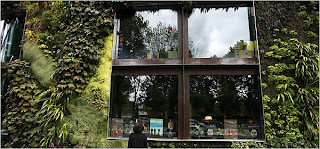Energy is one of the major topics on the green scene these days. With the government and local utility companies rewarding those who take the step forward to make changes for the better. Home owners who want to take advantage of some of these incentives need a starting point on how to make these changes on their own properties. Well, there are many ways to perform an energy retrofit of existing homes. Here is one example of what needs to be done.
A standardized method can be used in taking on an energy upgrade to an existing house. Here are the steps to follow:
1. Perform an initial assessment on the house. Gather information such as square footage, house volume, window data (area, type, orientation, shielding), insulation levels, appliance types and age, HVAC information, previous energy bills and materials of construction were necessary to understand the performance of the house. Find out houses characteristics, such as:
· Year Built
· Conditioned Space
· Ceiling Height
· House Volume
· Bedrooms
· Bathrooms
· Foundation
· Orientation
· Major Appliance Assessment- Refrigerator, Washer, Dryer, Dishwasher, Freezer
· Materials of Construction
· Insulation
· Windows
· Lighting
· HVAC
· Previous Energy Consumption
Some easy Energy saving recommendations would be:
· Radiant Barrier stapled to the underside of the roof trusses
· Solar screens on the south and west windows –the shading coefficient will depend on your location
· Weather stripping on doorjamb
· Programmable thermostat
· Refrigerator and freezer coils should be checked and cleaned periodically
· Ceiling fans should be added in bedrooms or other parts of the home such as family room
· Water heater lines should be insulated
3. Interview the occupants of the house and discuss to get an understanding of the household makeup and energy usage habits.
4. Energy Modeling - Once the initial assessment is completed, energy modeling should be done to simulate the existing house. Energy modeling can be a relatively quick and accurate method used to simulate the effects of changes to the building envelope, lighting and appliances within the home.
5. Install a monitoring system. Monitoring will help you estimate the benefit of each modification performed and help you know how all systems are performing. A system can be installed to directly monitor energy consumption and environmental conditions, as well as tell you if something is wrong with one of them.
6. Potential upgrade evaluation would come from suggestions made from the energy audit and energy modeling information. Once the list of potential upgrades is determined and modeled to estimate their benefit, savings should be compared to the installed cost to calculate a simple payback in years.
These simple steps will help you have a healthier living environment and saves you money in the long run.



















